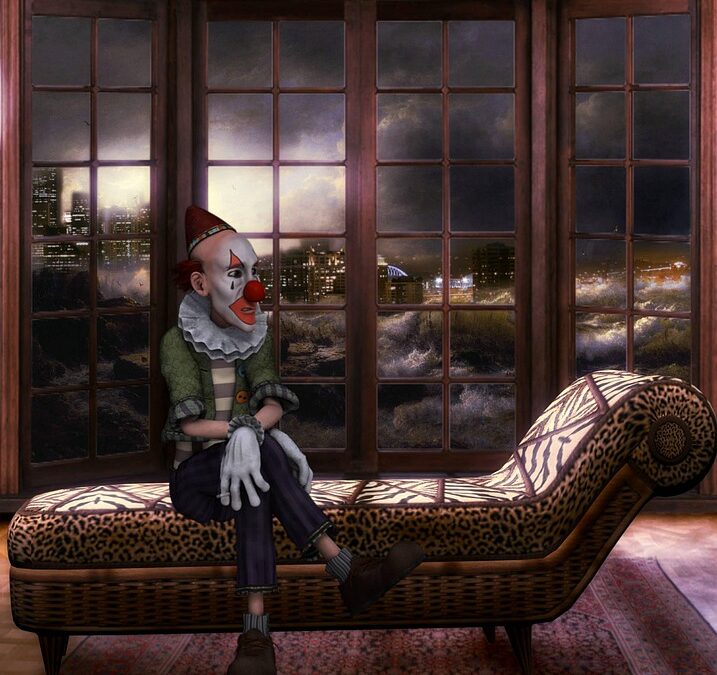Introduction
Art has been a cornerstone of human expression and culture for centuries. From the earliest cave paintings to modern digital art, the creative endeavors of artists have inspired, challenged, and connected people across the globe. But beyond the galleries and museums, art holds an even more profound potential: the ability to spark creativity and inspiration in everyone. This article explores how art can ignite the creative sparks within all of us, transcending boundaries and unleashing the power of imagination.
The Universal Language of Art
Art is often described as a universal language, capable of conveying emotions, ideas, and stories without the need for words. This unique characteristic allows art to resonate with individuals from diverse backgrounds and experiences. Whether it’s a painting, a sculpture, or a piece of music, art speaks to the core of our humanity, evoking emotions and sparking thoughts that might otherwise remain dormant.
The Science Behind Art and Creativity
Recent studies have shown that engaging with art can have a profound impact on the brain. Neuroaesthetics, a field that explores the neurological underpinnings of aesthetic experiences, has revealed that viewing or creating art can activate various brain regions associated with emotions, memory, and even critical thinking. The act of creating art stimulates the release of dopamine, a neurotransmitter linked to pleasure and reward, which can enhance motivation and drive.
Art as a Catalyst for Innovation
Innovation often requires thinking outside the box, challenging existing paradigms, and exploring new possibilities. Art encourages this mindset by inviting individuals to see the world from different perspectives. The abstract nature of art encourages open-ended interpretation, fostering a sense of curiosity and experimentation. This can be particularly beneficial in fields such as science and technology, where innovation thrives on creative problem-solving and novel approaches.
Art in Education: Fostering Creativity in the Young
Incorporating art into education systems can play a crucial role in nurturing creativity among young learners. Art education encourages students to express themselves, develop critical thinking skills, and engage in collaborative projects. These skills are invaluable, not only in artistic pursuits but also in everyday life and future careers. By exposing children to various forms of art, we equip them with the tools to become innovative thinkers and empathetic individuals.
The Therapeutic Power of Art
Art therapy has gained recognition as an effective therapeutic approach for individuals facing mental health challenges. By engaging in creative activities, individuals can process emotions, reduce stress, and gain insights into their thoughts and feelings. The non-verbal nature of art allows for a safe and expressive outlet, making it particularly beneficial for those who find it difficult to articulate their experiences through words.
Art in the Digital Age
The digital age has revolutionized the way we create and consume art. With the rise of digital tools and platforms, artists have unprecedented access to global audiences and collaborative opportunities. This democratization of art has led to a rich tapestry of creativity that transcends geographical barriers. The internet has also facilitated the sharing of artistic knowledge and resources, enabling aspiring artists to learn and grow regardless of their location.
Everyday Creativity: Bringing Art into Our Lives
You don’t need to be a professional artist to harness the creative sparks that art can ignite. Simple activities such as drawing, crafting, or even cooking can infuse creativity into our daily routines. By making time for creative pursuits, we allow ourselves to explore new ideas, relieve stress, and connect with our inner selves. Art can be a personal journey, one that enriches our lives and helps us navigate the complexities of the world.
Conclusion
Art is a powerful force that can ignite inspiration and creativity in everyone. By understanding and embracing the multifaceted nature of art, we open ourselves to new possibilities, fostering innovation, emotional well-being, and personal growth. As we continue to integrate art into our lives, we celebrate the boundless potential of human imagination and the enduring impact of creative expression.
FAQs
What is the purpose of art in society?
Art serves multiple purposes in society, including cultural preservation, social commentary, emotional expression, and entertainment. It acts as a medium for communication, allowing individuals to convey complex ideas and emotions in a universally accessible manner.
Can anyone be an artist?
Absolutely! Art is not limited to those with formal training or specific skills. Everyone has the potential to create art in their own way, using their unique perspectives and experiences as inspiration. The key is to embrace one’s creativity and explore different forms of artistic expression.
How can I incorporate more art into my daily life?
Incorporating art into your daily life can be as simple as setting aside time for creative activities, visiting local galleries or museums, or participating in community art projects. Engaging with art can also involve exploring different forms of media, such as music, film, or literature, to expand your creative horizons.
What are the benefits of art therapy?
Art therapy offers numerous benefits, including stress reduction, improved emotional regulation, increased self-awareness, and enhanced communication skills. It provides a safe and supportive environment for individuals to explore their feelings and experiences through creative expression.
How does art influence innovation?
Art influences innovation by encouraging creative thinking, problem-solving, and experimentation. It challenges traditional perspectives and inspires individuals to explore new possibilities, which can lead to breakthrough ideas and advancements in various fields.
Discover more from System Ent Corp
Subscribe to get the latest posts sent to your email.

